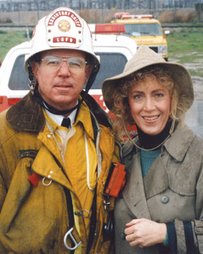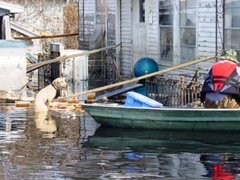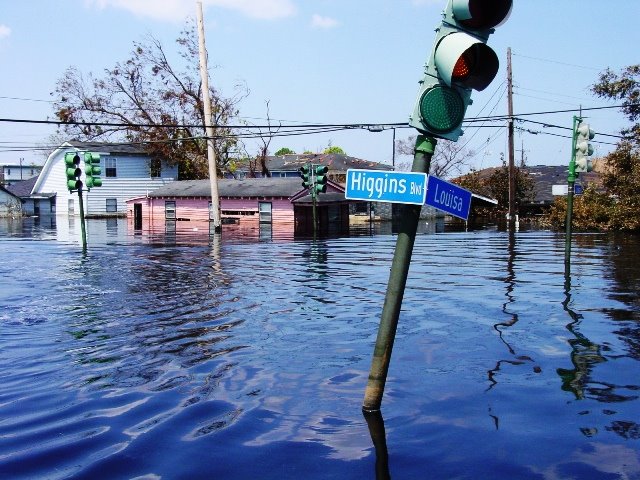Advocate urges flood safety
Back in 1980, freelance writer and filmmaker Nancy Rigg didn't expect the rest of her life to be consumed by an almost messianic mission to promote flood safety.
BY TRAVIS DUNN BALTIMORE August 27, 2003
Back in 1980, freelance writer and filmmaker Nancy Rigg didn't expect the rest of her life to be consumed by an almost messianic mission to promote flood safety.
Then again, Rigg also didn't anticipate the death that year of her fiance, 29-year-old Earl Higgins.
Higgins was one of dozens left dead by drowning in Los Angeles in 1980. In the midst of a torrential cloudburst, Higgins saw a child swallowed up by the river, and heedless of the risk, he dived in to make a desperate rescue attempt. He succeeded in saving the child – but only at the expense of his own life.
"Like many other good people, he gave his own life trying to save someone else," Rigg said. "Nearly half of deaths in floods are of would-be rescuers."
For Rigg, his death was devastating enough. But that initial sense of helplessness and frustration returns every time she reads about similar incidents. That's something she does every day. Rigg keeps a running tally of every drowning death in the United States. And this year, she said, has been particularly bad.
What has been so frustrating to her about many drowning incidents this year is how easily these deaths could have been prevented.
Perhaps the best example of this, she said, occurred in the Adirondacks this summer. Four teenage boys drowned in their favorite swimming hole, and they weren't even swimming.
Rigg said the boys were on a hike, when one of them fell in the flood-swollen creek where they liked to swim. The current was stronger than he was used to, and the other three boys tried to save him. All four of them died.
In another example, a woman in Pennsylvania died this summer when swimming in her favorite spot. But this happened to be just upstream from a low-head dam. "Some people call it a drowning machine," Rigg said.
When water levels were normal, the swimming hole was safe. But past flood stage, turbulence carried the woman close the dam, where she was sucked into the cyclic current created by the dam and was unable to escape.
"What's downstream – that's another thing that people aren't factoring in," she said.
Rigg insists that public education can be an effective antidote to unnecessary drowning deaths like these.
"I figure if we can't rescue people, then we have to educate them," she said. That's been a big part of her mission for the last 20-something years. She wrote, directed and produced "No Way Out," a video aimed at students in grades 4-12, and which has been used in classrooms nationwide, and particularly within the safety education curriculum of the Los Angeles County public schools.
Teaching kids not to attempt water rescues by themselves, as well as explaining to them the almost invisible power of floodwater, are two crucial components to water safety education, she said.
"Education works," she said, "but it has to be consistent and comprehensive."
But public education also needs to work in tandem with the training of disaster responders, who may not be aware of the specific dangers presented by swift-moving flood water.
"These two programs go hand in hand," she said.
Helping to improve communication between local agencies can be perhaps one of the most important steps in this educational process. For example, in 1980, when her fiance drowned, his body passed through 11 different flood jurisdictions. None of the officials from these separate jurisdictions were capable of effectively communicating with each other, not at the speed it would have taken to save his life.
Today in Los Angeles, the situation is quite different. The flood zones of the whole city are mapped out, and response is centrally coordinated. A person sucked into a flood channel in any part of the city can be tracked, and rescuers can be sent directly to where the person can be found.
"People are completely unaware of the power of flood water," she said. "Less than six inches of water can sweep you off your feet if it's going fast enough."
Rigg hopes that her life's work has made a difference. But she has her doubts when she takes notice of how government agencies and nonprofit groups collect statistics on drowning deaths.
Rigg thinks that most of these organizations low-ball the actual numbers. For example, she takes issue with the Centers for Disease Control's statistics, which show that an average of nine people drown every day in the United States. She notes that these numbers do not include boating-related deaths.
The perfect example of statistical incompetence, she said, first hit her in 1980, when she was told by an official for the state of California that there were no flood deaths in Los Angeles County for that year.
When the official told her that statistic, Rigg responded, "Well, I know of one flood death in 1980." But that wasn't the only mistake; Rigg had also counted about 20 other drowning deaths that year.
"To have his death written off as a statistic, and not even a very well calculated statistic, was extremely frustrating," she said. "So I don't believe the statistics at all. How are these statistics being tracked? It's really unfair to loved ones to not have their deaths being counted. It's about giving these hazards their due."
http://www.disasternews.net/news/article.php?articleid=2976
Subscribe to:
Post Comments (Atom)





No comments:
Post a Comment